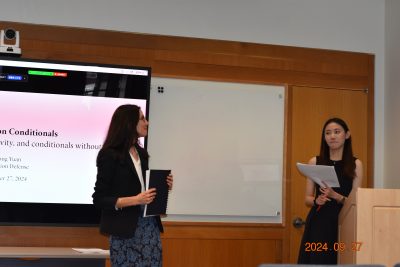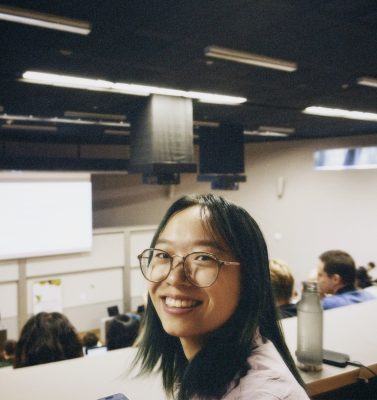The 49th Annual Boston University Conference on Language Development (BUCLD49) is taking place on November 7-10th 2024. UConn linguistics is going to be well represented at the conference with a keynote talk by:
- Diane Lillo-Martin. Sign Language Acquisition is a Human Right
… talks by:
- Irene Canudas Grabolosa, Madeline Quam, Marie Coppola, Jesse C. Snedeker and Annemarie Kocab. The role of language in building one and two-place predicates: event imitation in homesigners
- Annemarie Kocab, Madeline Quam, Marie Coppola and Jesse Snedeker. Who did what to whom? Marking event participants in Nicaraguan homesign systems
- Ting Xu (PhD 2016, now at Tsinghua University), Lyn Tieu (PhD 2013, now at University of Toronto) and Stella Christie. Highlighting the presupposition trigger helps: Evidence from Mandarin-acquiring children’s interpretation of presuppositional you ‘again’
- Penelope Daniel. Clitics as prerequisites for Spanish DOM
… and posters by:
- Alyssa Vorobey, Nadia Faehndrich and Lyn Tieu. Children project the presuppositional inferences of co-speech sound effects
- Anita Sritharan, Janice Shum and Lyn Tieu. Extending presupposition projection to co-speech gestures: The view from child language
- Lea Heßler-Reusch, Ting Xu and Xiaolu Yang. Chinese L2 learner’s interpretation of telicity in German
- Madeline Quam, Annemarie Kocab and Marie Coppola. Pragmatic knowledge in asymmetric language contexts
- Yoshiki Fujiwara (PhD 2022, now at Yamaguchi University). Acquisition of particle drop in Japanese: a preliminary study
- Chui Yi Lee and Angelica Hill. Children’s acquisition of circumstantial modals: Do they know where necessity can come from?
- Yixuan Yan and Yitong Luo. Do children know that PolQs are not AltQs? Evidence from Mandarin Chinese
In addition, Yixuan (Pepper) Yan was also awarded the Paula Menyuk Award for top-rated abstracts by student first authors. Congratulations!

Photo: UConn linguists and UConn-connected people at BUCLD following Diane Lillo-Martin’s keynote talk.



